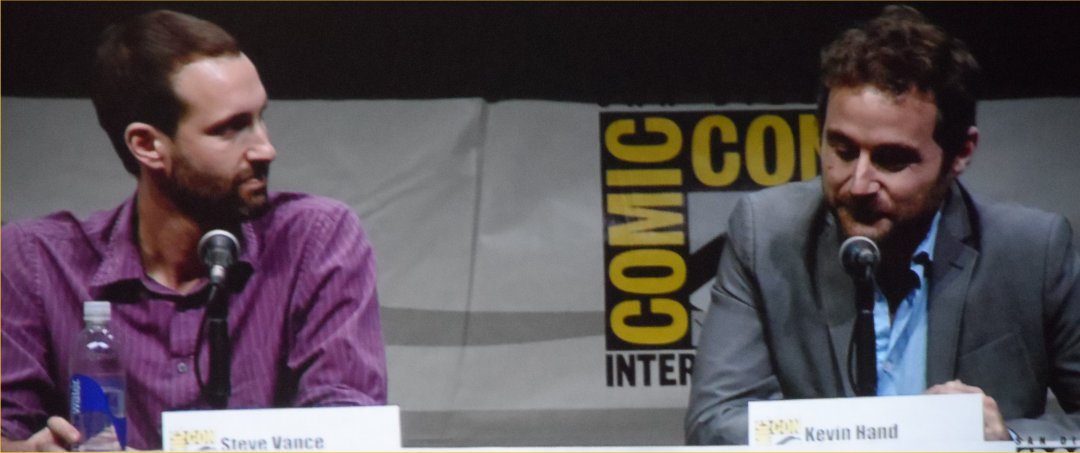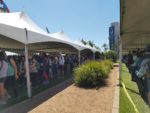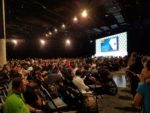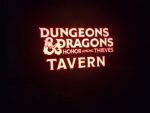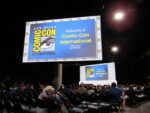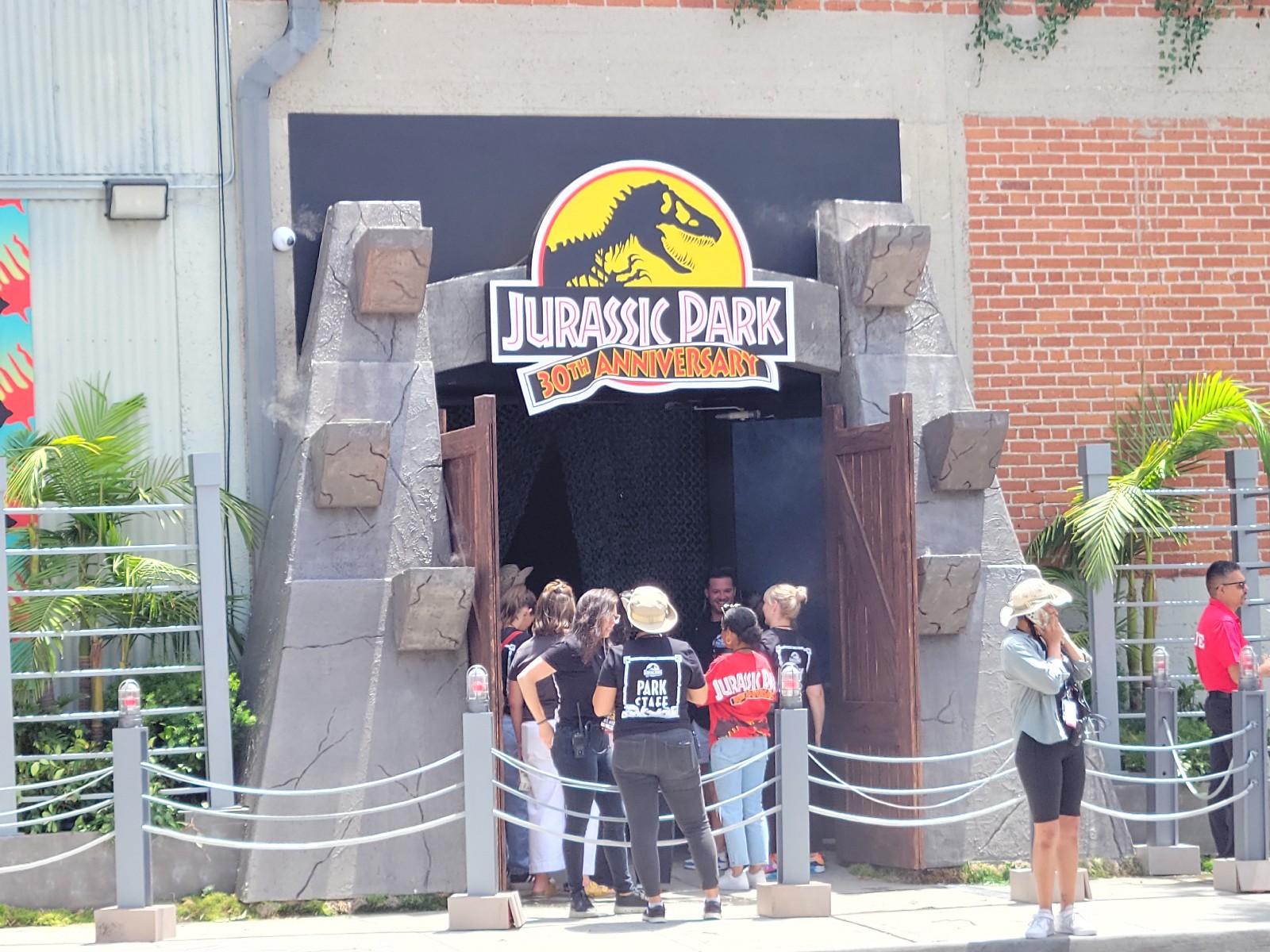Our journey into Hall H began with the Europa Report panel, which took place on Thursday, July 18, from 1:10pm-2:20pm. We walked in mid-panel, but still were able to see some interesting footage of the film and learn a little more about it. For those that have not heard of it before, it is a documentary-style film that follows a mission of astronauts to Jupiter’s moon Europa. Read on for a recap of what we saw at this panel!

The panel, which was moderated by astronomer Dr. Phil Plait, consisted of director Sebastian Cordero, composer Bear McCreary (who has scored several notable TV shows, such as Battlestar Galactica and Defiance, and revealed that Marvel’s Agents of S.H.I.E.L.D. was next), producer Ben Browning, actress Karolina Wydra (House), and NASA’s JPL scientists Steve Vance and Kevin Hand, who consulted on the movie.
We walked in just as they were about to show some footage from the film, which appeared to be the spaceship landing on the moon Europa, from an overhead view of the ship. Eventually we see the inside of the ship during what appears to be turbulence from entering the atmosphere (assuming Europa had one).
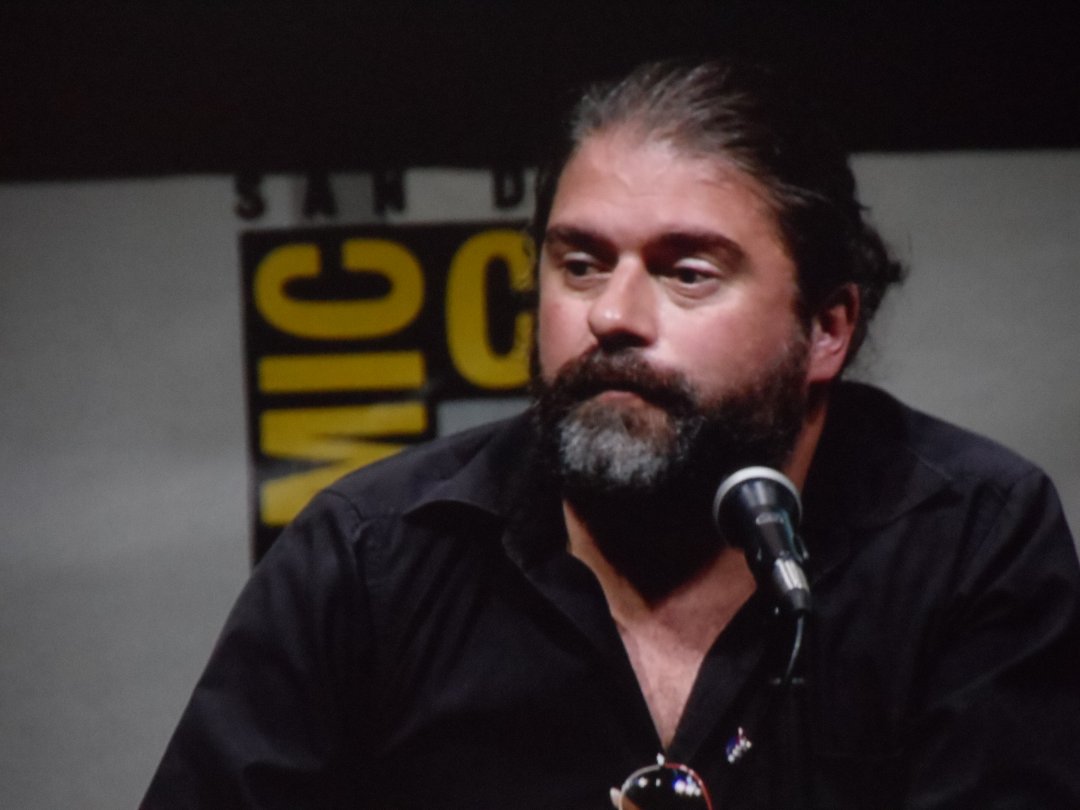 Dr. Plait commented about how a lot of the imagery in the film was based on actual imagery from NASA satellite photos. Cordero talked about how a lot of his reference and inspiration in making the movie came from the documentary For All Mankind, which was about the Apollo missions, and how he required anyone who came on board to work on the movie to watch For All Mankind first.
Dr. Plait commented about how a lot of the imagery in the film was based on actual imagery from NASA satellite photos. Cordero talked about how a lot of his reference and inspiration in making the movie came from the documentary For All Mankind, which was about the Apollo missions, and how he required anyone who came on board to work on the movie to watch For All Mankind first.
We then got to see a second clip from the film, where we witnessed one astronaut, played by Karolina Wydra, doing a moonwalk on Europa, where she only has a limited of time to get samples because of the radiation. Wyrda then spoke about how her character’s passion for discovery drew her to the role.
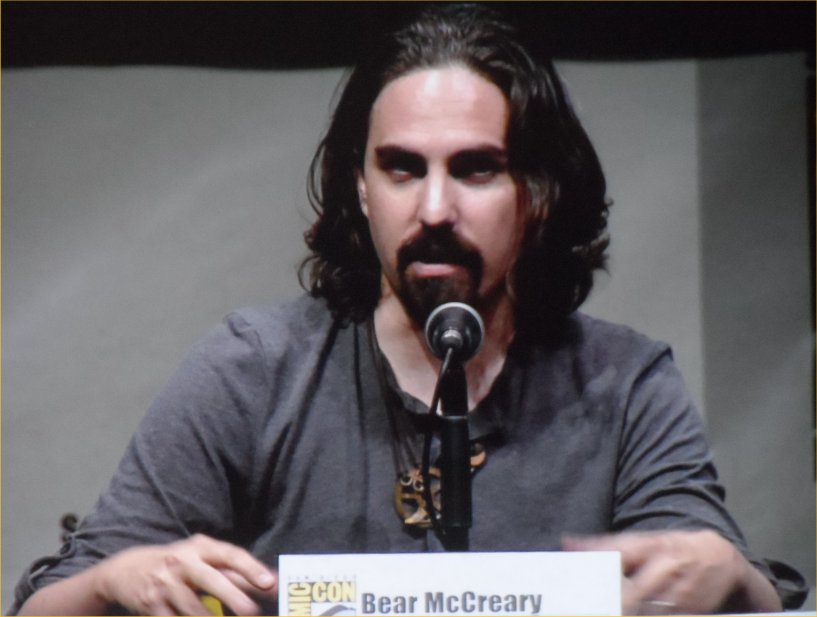 Dr. Plait asked about Bear McCreary’s experience with creating the “heart and soul” of the movie: the music. McCreary replied that, although he has worked on many sci-fi shows before, this was a new experience because the movie is so realistic. His challenge was creating an emotional connection to the characters without destroying the “faux-documentary elements.” His solution was to create two different personalities for the score: one which is cold and mechanical, and the other which is a beautiful orchestral melody that gets stuck in your head. His method of figuring out what kind of music to use was to consider the story that Europa Ventures, the company that put together the mission and the “documentary” we are watching, wanted to tell. Cordero agreed that the music was the key element in making you care about the characters despite the faux-documentary style of the film.
Dr. Plait asked about Bear McCreary’s experience with creating the “heart and soul” of the movie: the music. McCreary replied that, although he has worked on many sci-fi shows before, this was a new experience because the movie is so realistic. His challenge was creating an emotional connection to the characters without destroying the “faux-documentary elements.” His solution was to create two different personalities for the score: one which is cold and mechanical, and the other which is a beautiful orchestral melody that gets stuck in your head. His method of figuring out what kind of music to use was to consider the story that Europa Ventures, the company that put together the mission and the “documentary” we are watching, wanted to tell. Cordero agreed that the music was the key element in making you care about the characters despite the faux-documentary style of the film.
Dr. Plait then asked about the tension between science and science fiction, whether there was a point where something came up during the film and someone said they couldn’t do it because it wasn’t scientific, but they did it anyway, or vice versa, where science influenced a change in the story. Cordero spoke about how the original script had the crew making their big discovery on the surface, but later they changed it so that the discovery would be made under the ice, to add the tension of the ice cracking toward the end of the movie, and that the added tension to the climax would not have been there if they had stuck to the original script. On the flipside, the JPL scientists kept emphasizing the radiation that would be prevalent on Europa, which turned out to be a big plot point in the movie.
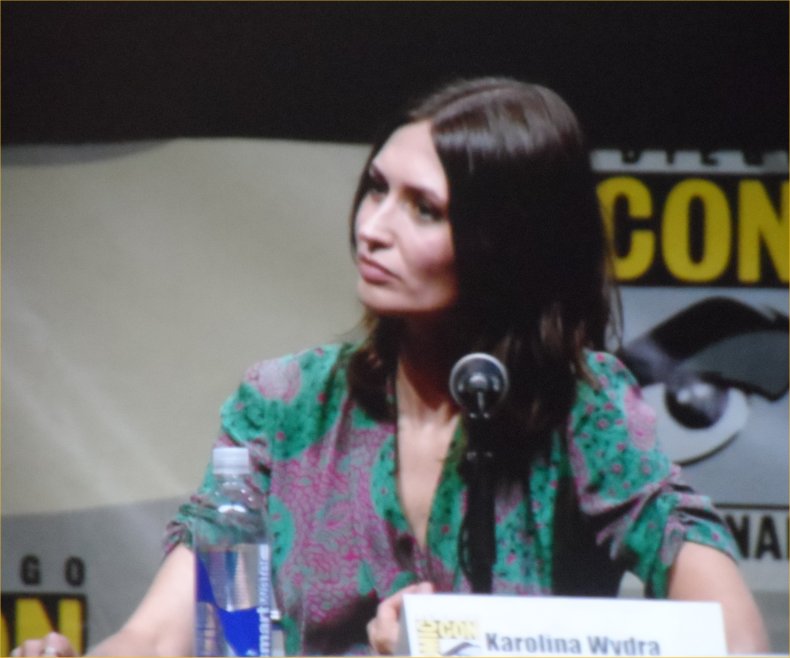 Wydra talked about how she was very committed to wearing the whole spacesuit for her moonwalk, even though it was very heavy, weighing 50 pounds! The spacesuit itself was modeled after real spacesuits. However, there were fans in the suit since it was really hot, but they had to be turned off while shooting dialogue.
Wydra talked about how she was very committed to wearing the whole spacesuit for her moonwalk, even though it was very heavy, weighing 50 pounds! The spacesuit itself was modeled after real spacesuits. However, there were fans in the suit since it was really hot, but they had to be turned off while shooting dialogue.
Finally, Dr. Plait asked JPL scientists Steve Vance and Kevin Hand, “What’s next?” and if we could make this film a reality. They replied that before they can send humans to Europa, first they would need to find out how thick the ice is and the composition of the ocean, and to do that NASA’s been studying a mission, for which they have come up with a design for a spacecraft called the Europa Clipper. Kevin said that what gets him and Steve up in the mornings is the idea that within the next few decades we’ll be able to answer the question “Are we alone?”
Europa Report will be released in theaters August 2, and is actually already available to watch on Video On Demand and for download on iTunes.


